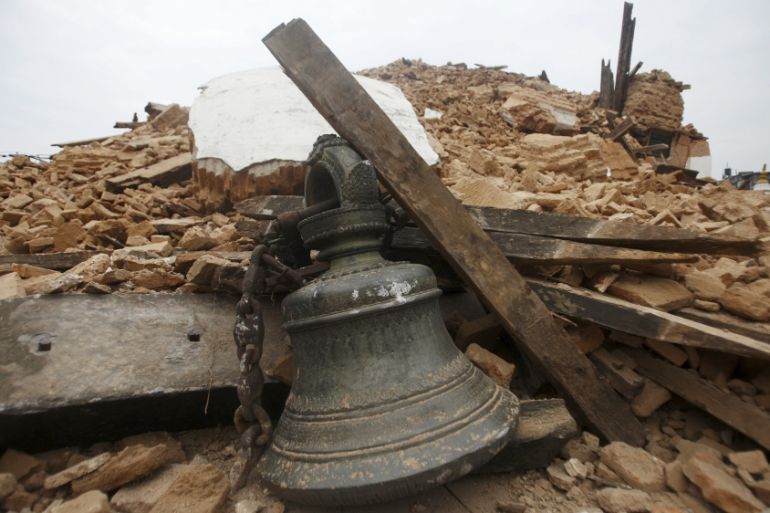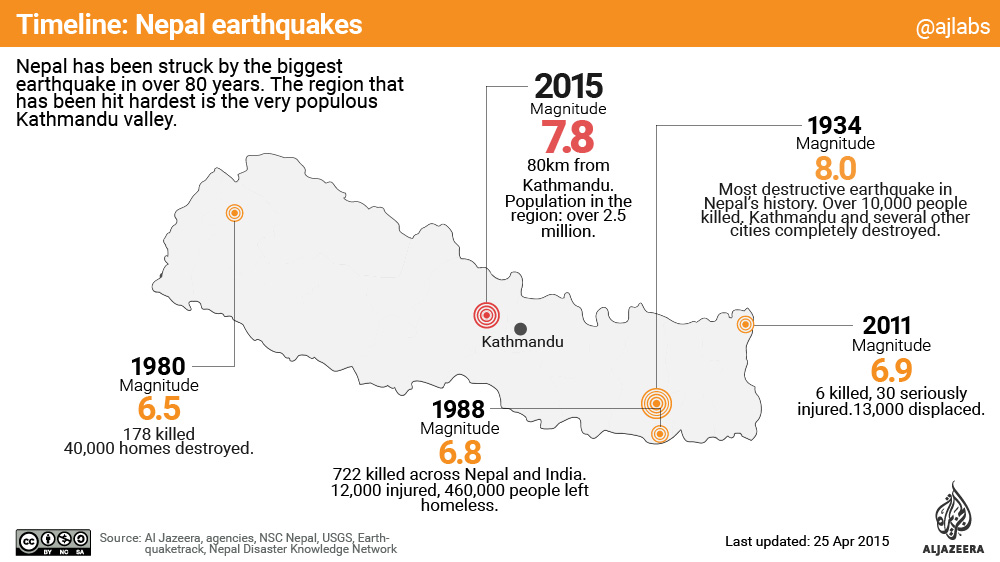Why Nepal is vulnerable to earthquakes
Tremendous force builds up as two large tectonic plates are being forced up against and under each other.

Scientists are now analysing seismic data in an effort to understand the strongest earthquake to hit Nepal in more than 80 years, which has left more than 3,000 people dead.
The Earth’s crust is made of large tectonic plates. These land masses, which sometimes include whole continents, are constantly moving and bumping into each other.
Keep reading
list of 4 itemsPhotos: Athens turns orange under North Africa’s Sahara dust clouds
Turtles swimming to extinction in Malaysia as male hatchlings feel heat
Could shipping containers be the answer to Ghana’s housing crisis?
Nepal straddles the fault line between two of these plates; the Indian and the Eurasian plates. These are being forced up against and under each other, at a rate of about 5cm each year.
That may not sound like very much, but there is tremendous force behind them and when this builds up, an earthquake results.
“This is probably the biggest earthquake to hit Nepal since 1934,” Brian Baptie of the British Geological Survey told Al Jazeera.
“Earthquakes of this size are capable of causing an incredible amount of devastation.”

Saturday’s earthquake is likely to be especially damaging because it was both strong and shallow.
The depth of a quake frequently determines how much shaking is felt. In this case, the quake occurred just 11km beneath the surface, causing violent tremors in the immediate area.
“This is a very large earthquake in a significantly populated region with infrastructure that has been damaged in past earthquakes,” Paul Earle, a US Geological Survey seismologist, said.
“Significant fatalities are expected.”
The mountainous terrain is likely to have resulted in even more damage.
Layer of clay
The heavily populated Kathmandu valley has a 300-metre-deep layer of clay beneath it.
This reflects and focuses the seismic waves of an earthquake within the valley, resulting in what is known as soil liquefaction.
This occurs when vibrations cause solid ground to turn in to something like quicksand.
|
|
As a result, buildings and roads can be swallowed by the earth.
“We know roughly where earthquakes occur, and how often they occur,” Baptie said.
“That helps plan accordingly so it’s possible to construct buildings to minimise the amount of damage. It’s also possible for communities to become more resilient if they are aware.”
Nepal is one of the poorest countries in the world and little of this earthquake preparation work had been done.
“It was sort of a nightmare waiting to happen,” said seismologist James Jackson, head of the earth sciences department at the University of Cambridge in England, who was attending an earthquake preparedness meeting in Kathmandu last week.
“Physically and geologically what happened is exactly what we thought would happen.”
Scientists say the area can expect at least 35 5+ magnitude aftershocks over the next few days and weeks.
These have the potential to destroy already-damaged buildings.
They also warn of the risk of landslides. Some have already been caused by the quakes.
Others are likely to happen during the upcoming monsoon season.